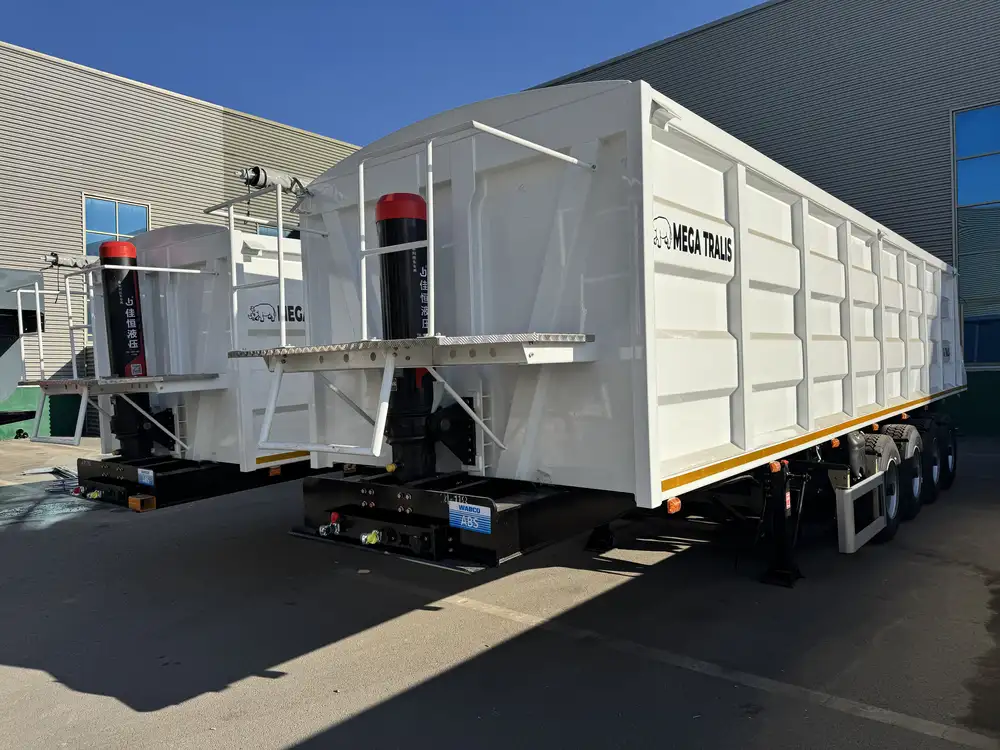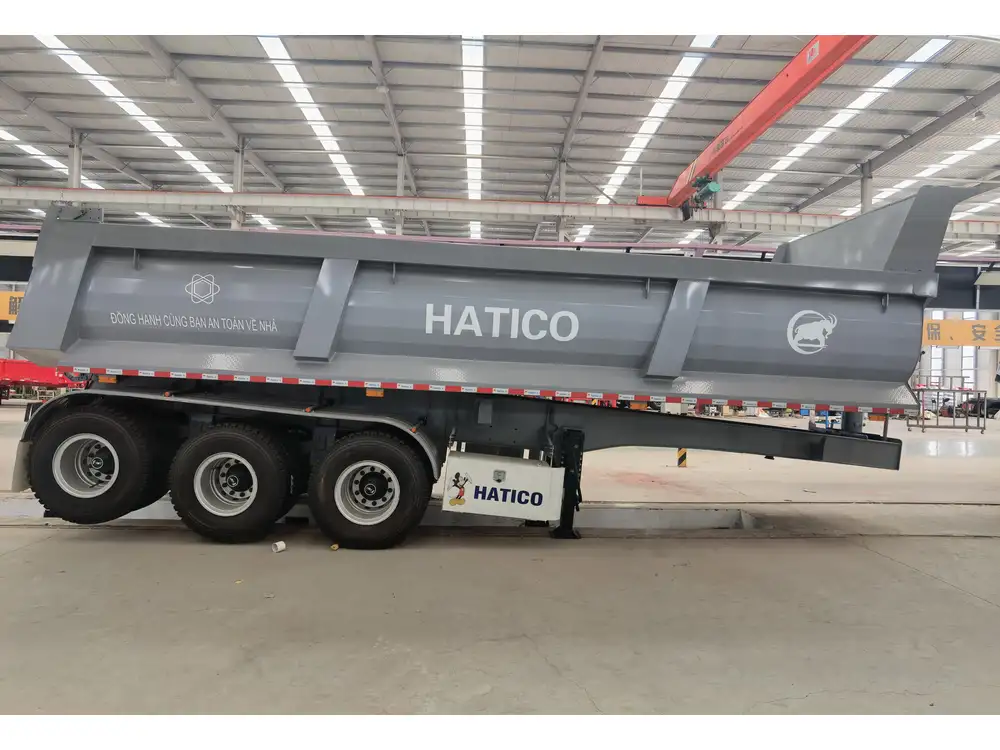Introduction to Intermodal Transportation
In the ever-evolving world of logistics, intermodal transportation emerges as a vital player, revolutionizing how goods are transported across vast distances. At the heart of this system are intermodal containers and chassis trailers, key components that facilitate efficient cargo movement. This article delves deeply into the nature of these transportation tools, their characteristics, applications, and the innovations shaping the future of the industry.
What is an Intermodal Container?
An intermodal container is a standardized, often metal container used for the transportation of goods. These containers are designed for multiple modes of transport, including ship, rail, and truck, thereby streamlining the logistics process.

Key Characteristics of Intermodal Containers:
Standardization: Most intermodal containers adhere to ISO standards, typically measuring either 20 or 40 feet in length. This standardization allows for seamless transfer between different modes of transport without unloading the cargo.
Durability: Constructed from high-strength materials such as corten steel or aluminum, these containers are built to withstand extreme environmental conditions, ensuring the safety of the contents during their journey.
Security Features: Intermodal containers are equipped with locking mechanisms to reduce the risk of theft and ensure the safety of goods.
Versatility: They can transport a variety of cargo types, from dry goods to bulk liquids, accommodating different industries’ needs.
| Container Type | Length | Typical Use |
|---|---|---|
| Standard Container | 20 ft | General cargo |
| Standard Container | 40 ft | Household goods, textiles |
| Reefer Container | 20 ft | Perishable items |
| Tank Container | 20 ft | Liquid bulk products |
What is a Chassis Trailer?
A chassis trailer serves as the platform that supports the intermodal container during transport. These trailers are specifically designed to carry containers and are crucial in the intermodal transportation ecosystem.
Main Features of Chassis Trailers:
Robust Structure: Chassis trailers are engineered to support the significant weight of loaded containers. A typical chassis is constructed from high-strength steel or aluminum to ensure durability and stability.
Versatile Compatibility: Most chassis trailers can accommodate various container sizes (20 ft or 40 ft) due to adjustable locking mechanisms, maximizing operational flexibility.
Easy Maneuverability: Chassis trailers are designed for easy attachment and detachment from trucks, allowing for quick loading and unloading at ports, rail yards, and distribution centers.
Tire Configuration: Many chassis have different axle configurations, ranging from single to tri-axle, which can influence weight distribution and towing capacity.
| Chassis Type | Axle Configuration | Recommended Load Capacity |
|---|---|---|
| Standard Chassis | 2 Axles | Up to 40,000 lbs |
| Heavy-Duty Chassis | 3 Axles | Up to 65,000 lbs |
| Lightweight Chassis | Single Axle | Up to 25,000 lbs |

The Symbiotic Relationship Between Intermodal Containers and Chassis Trailers
Understanding the nuanced relationship between intermodal containers and chassis trailers is key to grasping the logistics industry’s complexities.
Seamless Integration
When an intermodal container is loaded onto a chassis trailer, a seamless transition occurs. This integration enables efficient transportation over land and supports the rapid transfer of goods from ships to trucks or trains without necessitating unloading.
Optimization of Time and Resources: The movement of goods is expedited as containers can be readily transferred between trucks and trains without delays associated with unpacking and repacking.
Cost Efficiency: Utilizing standardized containers reduces shipping costs and makes it easier to compare shipping rates, allowing businesses to maximize their logistics budgets.
Challenges in Integration
Despite the advantages, several challenges can arise:
Weight Restrictions: Transporting a fully loaded container requires careful attention to weight limits, governed by local and international regulations. Overloading a chassis can result in fines and damage to equipment.
Container Misplacement: In large logistics hubs, containers can become misidentified or misplaced, delaying shipments. Efficient tracking technologies must be implemented to mitigate this risk.
Infrastructure Limitations: Not all ports and rail yards are equipped with the necessary infrastructure to accommodate specific container types or sizes, potentially causing bottlenecks in the supply chain.

Advantages of Using Intermodal Containers and Chassis Trailers
The use of intermodal containers and chassis trailers offers numerous advantages to manufacturers and investors alike.
1. Enhanced Efficiency
Utilizing intermodal containers reduces loading and unloading times due to their standardized size, allowing goods to swiftly transition between different transport modes.
2. Sustainability
Intermodal shipping is often more environmentally friendly than traditional methods. By optimizing transportation routes and utilizing train networks, emissions per ton-mile can be significantly reduced.

3. Versatile Shipment Options
With the ability to transport a diverse range of goods, intermodal containers can cater to various industries—including automotive, consumer goods, and agriculture—facilitating broader market reach.
4. Reduced Risk of Damage
The enclosed nature of intermodal containers protects cargo from potential environmental threats (e.g., rain, snow) and reduces the likelihood of theft, thereby enhancing product integrity during transport.
Future Trends in Intermodal Transportation
As the logistics industry continues to evolve, several trends will likely shape the future landscape of intermodal containers and chassis trailers.

Digital Transformation
Blockchain Technology: The application of blockchain can revolutionize inventory tracking and provide enhanced transparency across the supply chain. Each container’s journey can be documented digitally, ensuring seamless transfer of ownership and reducing disputes.
Telematics: The incorporation of telematics will allow for real-time monitoring of containers, improving route optimization and ensuring timely deliveries.
Automation and Robotics
Automated systems are being integrated into terminal operations, enhancing the speed and accuracy of loading and unloading processes. Robotics will play a crucial role in efficiently managing cargo at entry and exit points.
Sustainability Initiatives
The push toward greener supply chains is likely to continue. Innovations in eco-friendly chassis design and conversion of older fleets to electric options will drive sustainability.

Modular Container Design
Future designs may incorporate modular containers that can be easily reconfigured to meet shifting cargo demands, offering greater flexibility to logistics providers.
Addressing Common Concerns
Safety Regulations
Maintaining compliance with local and international safety regulations is paramount. Companies must regularly inspect both containers and chassis trailers to ensure they meet safety standards, mitigating the risk of accidents and legal repercussions.

Managing Supply Chain Disruptions
Recent global events have highlighted vulnerabilities in supply chains. Companies must develop robust contingency plans incorporating alternative modes of transport and diversified supply sources to stay resilient against future disruptions.
Conclusion
In the intricate world of logistics, intermodal containers and chassis trailers play a pivotal role in enabling the seamless transfer of goods across various transportation modes. Their structured design, coupled with ongoing innovations in technology and sustainability, positions them at the forefront of modern supply chain solutions. By understanding the attributes, challenges, and future trends of these components, businesses can harness the full potential of intermodal transportation, ensuring efficient, cost-effective, and innovative logistics strategies.
Where to Find Quality Intermodal Containers and Chassis Trailers
As a forward-thinking company in the manufacturing sector, securing high-quality intermodal containers and chassis trailers is essential for maintaining your competitive edge. Factors to consider include:
- Reliable suppliers with proven track records
- Customization options to meet specific cargo needs
- Support for after-sales service and maintenance
Invest in these pivotal tools today to drive your logistics operational effectiveness tomorrow.



